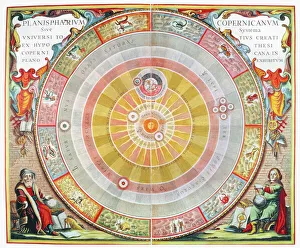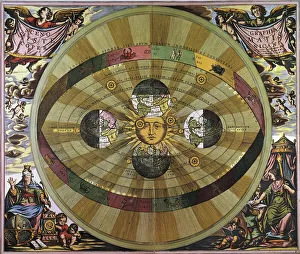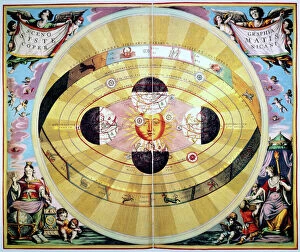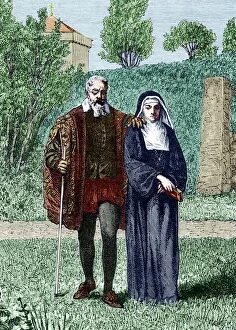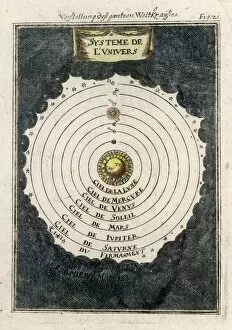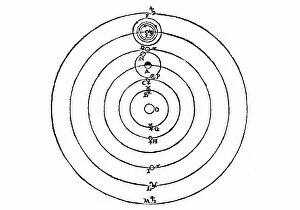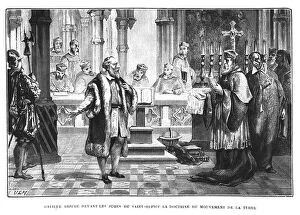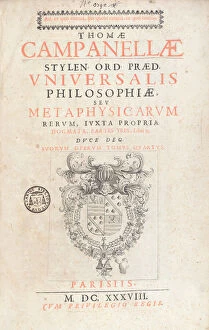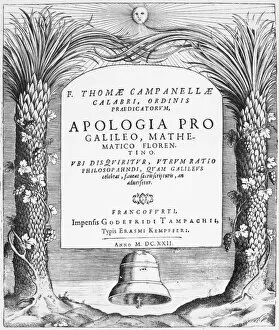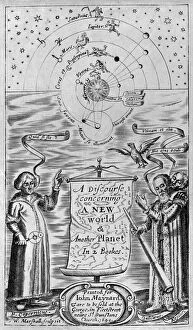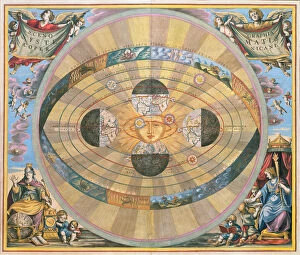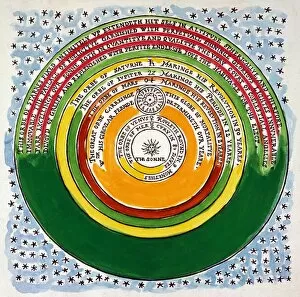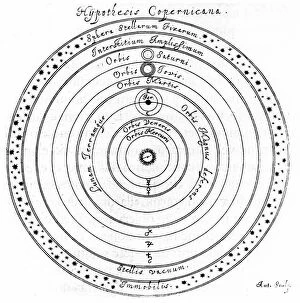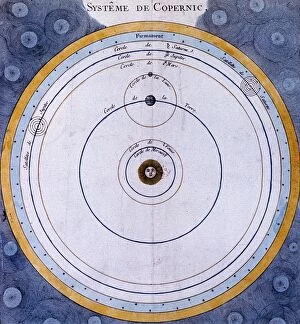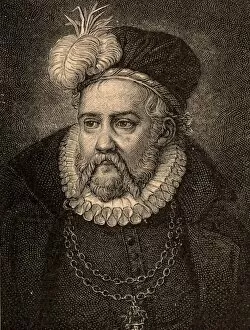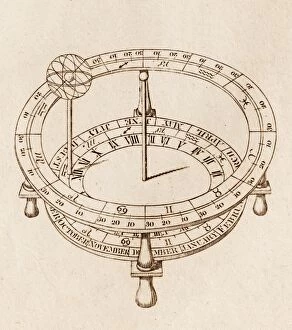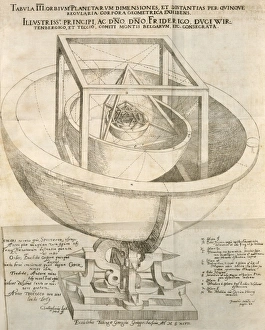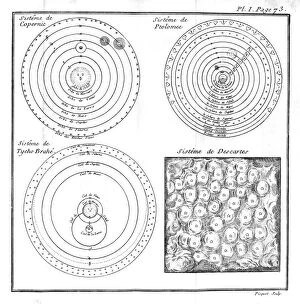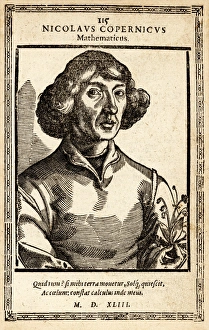Copernican Collection
In the 17th century, a revolutionary shift in our understanding of the universe took place
All Professionally Made to Order for Quick Shipping
In the 17th century, a revolutionary shift in our understanding of the universe took place. The Copernican model, with the sun at its center, challenged centuries-old beliefs and paved the way for modern astronomy. One iconic representation of this groundbreaking concept is found in Andreas Cellarius' Atlas Coelestis seu Harmonia Macrocosmica. In this copperplate engraving from 1660, we see Copernicus appearing at the lower right and Ptolemy at the lower left. It visually captures the Copernican Universe, placing the sun as its focal point. Galileo Galilei, an Italian astronomer who played a crucial role in advancing this heliocentric theory, is also depicted in various artworks related to his contributions. One such portrayal shows Galileo alongside his daughter Maria Celeste. Their bond symbolizes not only familial ties but also their shared dedication to scientific exploration. The Geocentric System engraving from 17th-century Dutch art further emphasizes how radical Copernicus' ideas were during that time period. With its depiction of Earth as just one celestial body among many orbiting around the central sun, it challenges traditional notions of humanity's place in the cosmos. Nicolas Copernicus himself is immortalized through engravings like Orbes Celestes. Created during his lifetime (1473-1543), these images capture his visionary ideas that would reshape our understanding of space and planetary motion forever. However, despite their groundbreaking work, scientists like Galileo faced opposition from religious authorities who adhered to geocentrism. A famous scene depicts Galileo retracting his theory before judges—a moment that highlights both intellectual courage and societal pressures faced by those challenging established beliefs. Even after centuries have passed since these pivotal moments occurred, their significance remains palpable today.

